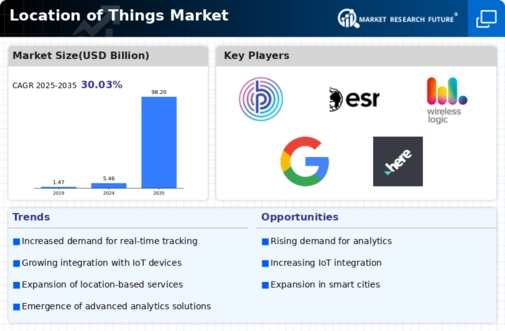Market Share
Location of Things Market Share Analysis
In recent years, the Location of Things (LoT) market—a segment of the larger Internet of Things (IoT)—has experienced significant growth due to increasing demand for location-based services and solutions across various sectors. One predominant strategy entails differentiation through technological innovation. Companies strive to develop cutting-edge Location of Things solutions that come with unique features and capabilities. Additionally, setting strategic alliances and collaborations is another widely used market share positioning approach. Firms comprehend the need for partnerships to enhance their offerings and expand their geographical coverage area because we are living in a connected world today. Collaborating with other technology providers, data analytics companies, or industry-specific players enables LoT firms to offer comprehensive solutions. Moreover, many IoT companies concentrate on specific verticals or industries. The key focus here is not handling diverse applications but rather offering location-based solutions that fit specific regions. In healthcare or integrated operations, among others, firms customize products according to particular industry needs so as to accrue domain expertise and gain competitive advantage within niche markets.' Cost management is yet another market share positioning strategy that emphasizes efficiency and economies of scale. Cost leaders focus on operations streamlining, decreasing production costs, and competitive pricing of their offerings. This can be particularly effective in attracting cost-conscious customers and gaining market share, especially in industries where navigation is highly dependent on costs. Customer-oriented strategies also play a critical role in shaping market share within the domain of Location of Things. Providing excellent customer service, customization options, and a user-friendly interface point can significantly impact consumer satisfaction as well as loyalty. Also, companies must ensure they are not only retaining their current customer base but also using them to draw new ones through positive word-of-mouth and reputation building.









Leave a Comment